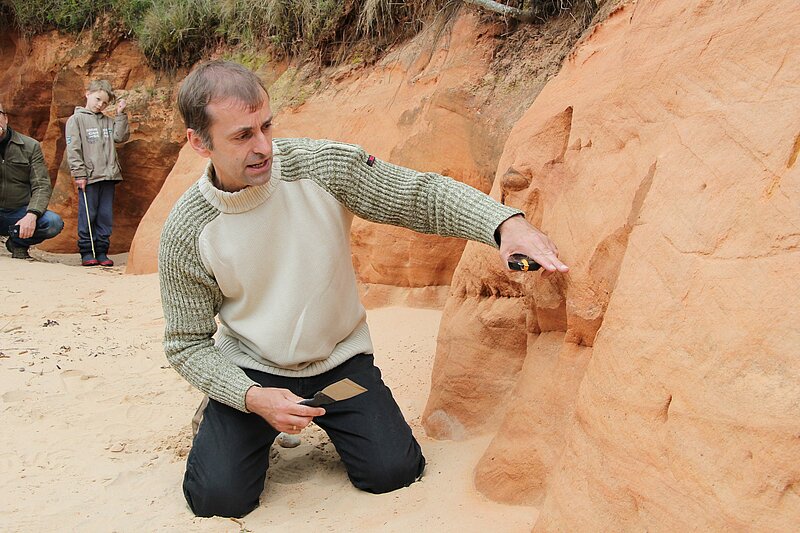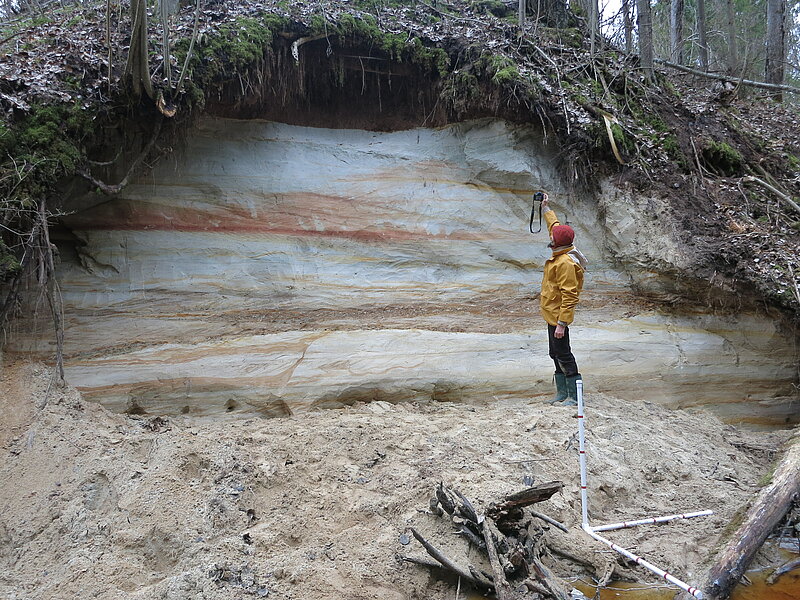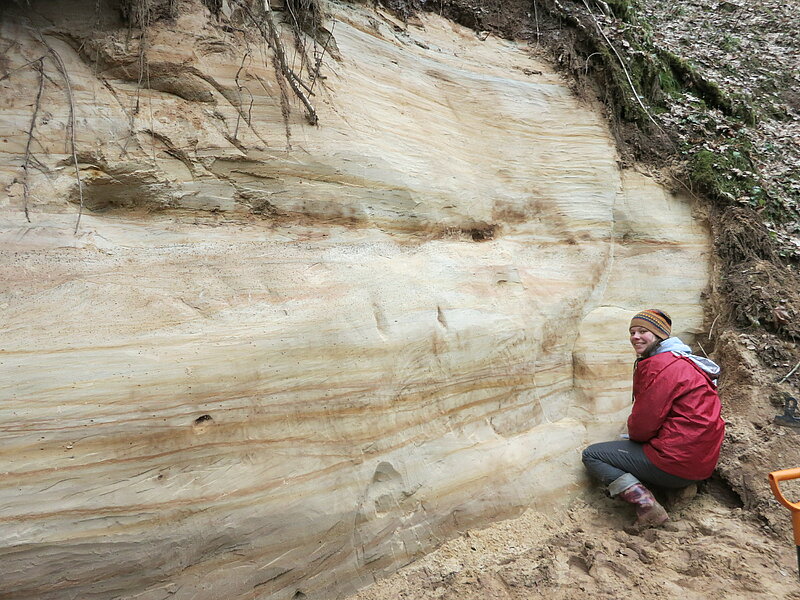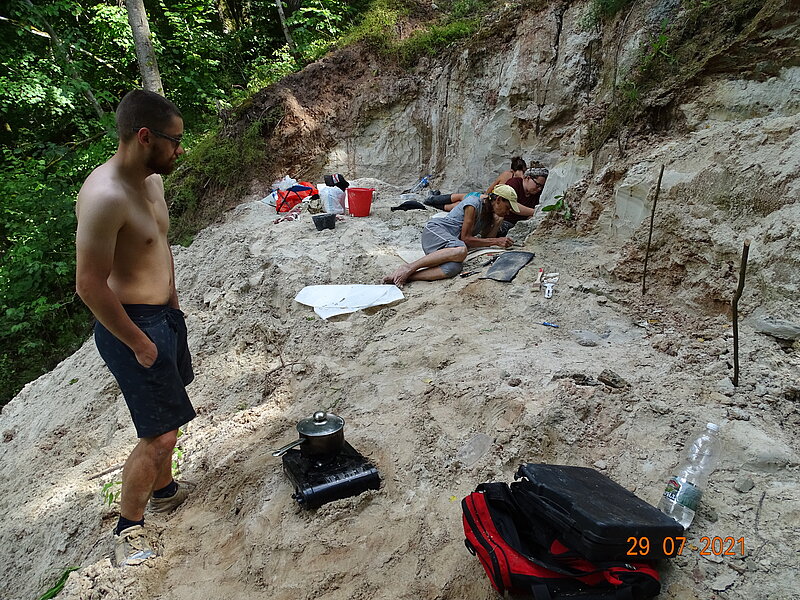The age of the ancient Devonian sedimentary rocks widely distributed in Latvia and exposed in many magnificent cliffs is 390-360 million years. Research of these sedimentary rocks in Latvia also has a long history, but the remains of vertebrates from the sandstones of the Devonian Burtnieki Formation were found more than 200 years ago! Nowadays, the University of Latvia is conducting research in Palaeozoic and Mesozoic stratigraphy (determination and comparison of the age of rocks), vertebrate palaeontology, and palaeoecology. Studies also deal with evaluation of sedimentary environments of sandy, clayey, and carbonate deposits. In recent years many features of tidal processes were identified in the Devonian deposits, which allow for better understanding of the role of these processes in the shallow, wide sea that occasionally covered the territory of Latvia during the Devonian period. The discoveries of ancient soils and plant root structures in sedimentary rocks give insight into development of plants in the Devonian period. Studies of ancient organisms, their life conditions, as well as surrounding sedimentary environments clarify ancient physiographic conditions (palaeogeography) of the Devonian Baltic seas, deltas and estuaries of rivers. The combined sedimentological and palaeontological studies are important also to better understand where and why the mineral deposits such as dolomites, clay, quartz sands, gypsum, and other resources formed, what factors influenced the quality of minerals.
The research is carried out in cooperation with foreign partners at Uppsala University, University of Tartu, Tallinn University of Technology, Vilnius University, Wrocław University and elsewhere.
Important publications
Lukševičs, E. 2021. Revision of asterolepidoid antiarch remains from the Ogre Formation (Upper Devonian) of Latvia. Estonian Journal of Earth Sciences, 70 (1): 3–17.
Stinkulis, Ģ., Lukševičs, E. and Reķe, T. 2020. Sedimentology and vertebrate fossils of the Frasnian Ogre Formation, Gurova outcrops, eastern Latvia. Estonian Journal of Earth Sciences, 69 (4): 248–261.
Beznosov, P.A., Clack, J.A., Lukševičs, E., Ruta, M. and Ahlberg, P.E. 2019. Morphology of the earliest reconstructable tetrapod Parmastega aelidae. Nature, 574: 527-531.
Lebedev O. and Lukševičs E. 2018. New material on Ventalepis ketleriensis Schultze, 1980 extend the zoogeographic area of a Late Devonian vertebrate assemblage. Acta Geologica Polonica, 68 (3): 437-454.
Lukševičs E. un Stinkulis Ģ. 2018. Nogulumiežu segas stratigrāfiskais iedalījums, uzbūve, sastāvs un reģionālās atšķirības. Gr: Nikodemus O., Kļaviņš M., Krišjāne Z., Zelčs V. (zin. red.) Latvija: zeme, daba, tauta, valsts. Rīga, Latvijas Universitātes Akadēmiskais apgāds. 38.-58. lpp.
Lukševičs, E., Stinkulis, Ģ., Ivanov, A., and Tirzmale, D. 2018. The Borschovo section of the Gauja and Amata regional stages (Leningrad Region, Russia): sedimentology and biostratigraphy. Estonian Journal of Earth Sciences, 67, 21-32.
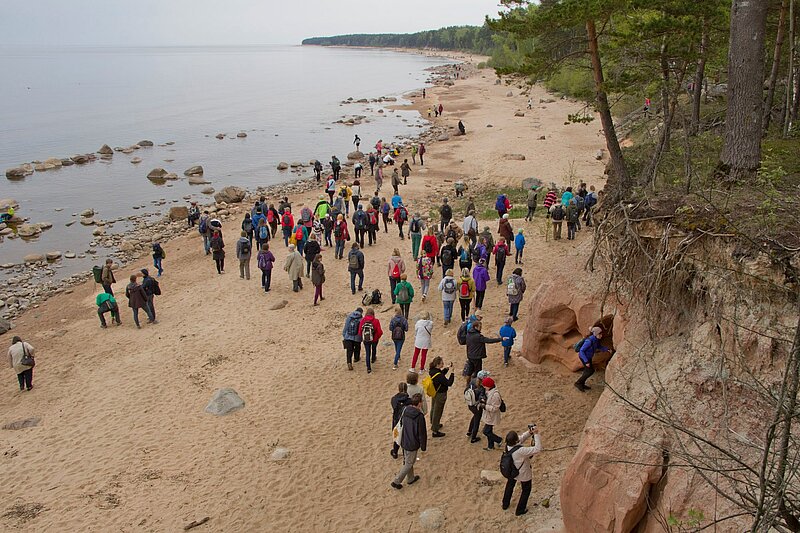


 Academic Centre
Academic Centre